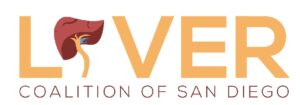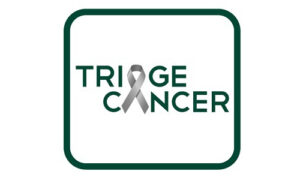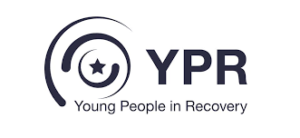
ACTION for prescription digital therapeutics (PDTs) is a multi-disciplinary partnership that is working to expand the adoption, coverage, and access to PDTs for individuals with chronic disease. By accelerating the use of this novel technology, we aim to improve therapeutic outcomes for people with chronic diseases, including those in underserved communities, meeting people where they are, whoever they are. As such, ACTION stands for Adoption, Coverage and Access, Therapeutic Outcomes, Inclusion, Options, and Novel Technology.
ACTION for PDTs is a multi-disciplinary partnership that works to expand the adoption of, coverage of, and access to prescription digital therapeutics (PDTs) for individuals with chronic diseases.
We are committed to six ACTION principles:
- Encourage the adoption of evidence-based, FDA-regulated PDTs for treating chronic diseases.
- Provide comprehensive coverage of and access to PDTs.
- Improve therapeutic outcomes for many diseases and disorders through greater PDT use.
- Drive inclusion of underserved communities in accessing quality health care by utilizing PDTs to reduce inequities, disparities, and social determinants of health.
- Optimize therapeutic options for patients and providers through PDT use. and
- Ensure novel technologies that deliver therapeutic care are adequately regulated to ensure safety and efficacy.
Our members include:
- Patient and caregiver advocacy groups
- Health policy organizations
- Professional associations
- Research, innovation, and technology organizations
- Individual patients, caregivers, and loved ones
- Individual health care providers and academics
- Commercial supporters
For more information, review our prospectus here.
Considered a new category of therapeutics, PDTs are evidence-based medical interventions using software that can be accessed on a tablet or smartphone to prevent, manage, or treat a range of diseases and disorders. As such, PDTs deliver high-quality diagnostic care and treatments without requiring patients to travel to a healthcare facility.
PDTs are similar to traditional therapeutics in several ways. For example, they are regulated by the FDA. As such, they are tested for safety and efficacy, developed using strict quality standards, and labeled according to FDA requirements. Additionally, PDTs are only available to patients when prescribed by a licensed healthcare provider and must be used under clinician supervision. They are also eligible to be priced and reimbursed similar to traditional medication via federal, state, and commercial insurers.
Today, PDTs approved or cleared by FDA and those undergoing clinical trials aim to treat a variety of diseases and disorders, including cancer and Type 2 diabetes, chronic stroke, multiple sclerosis, Parkinson’s disease, autism, chronic insomnia, ADHD, and many mental health conditions. Yet, access to these innovative therapeutics is not a certainty. For example, because PDTs are relatively new, they do not fall under an existing Medicare benefit category, meaning they are now excluded from Medicare coverage. Creating a new Medicare benefit category specifically for PDTs that could also pave the way for Medicaid and private payers to offer similar coverage. Additionally, patients and providers must be educated on the benefits and availability of PDTs for patients with chronic and complex conditions.
Therapeutic Areas
PDTs aim to prevent, manage, or treat a wide range of diseases and conditions. PDTs are FDA-cleared and in development to treat a wide-range of conditions such as:
Therapeutic Areas with
FDA-Cleared PDTs: | Therapeutic Areas with
PDTs in Development: |
- ADHD
- Amblyopia
- Autism
- Chronic Low Back Pain
- Chronic Insomnia
- Irritable Bowel Syndrome
- Opioid Use Disorder
- Substance Use Disorder
- Type 2 Diabetes
| - Alcohol use disorder
- Anxiety disorders
- Asthma
- Cancer
- Chronic Obstructive Pulmonary Disease (COPD)
- Chronic stroke
- Congestive heart failure
- Coronary artery disease
- Depression
- Dementia
- Gastroenterology
- Hypertension
- Multiple sclerosis
- Parkinson’s disease
- Pelvic Health
- Post-traumatic stress disorder (PTSD)
- Schizophrenia
- Stroke
- Women’s Health
|
ACTION for PDTs is committed to six areas of purpose:
- Adoption
The “A” in ACTION stands for “Adoption.” With the goal of encouraging adoption of PDTs as evidence-based, FDA-regulated medical interventions, the collaborative will serve as a resource for patients, health care providers, payers, lawmakers, and policymakers. Specifically, ACTION for PDTs will provide stakeholders with the latest information on the capabilities of PDTs in preventing, managing, and treating diseases and disorders as well as the clinical improvements associated with PDTs and their cost-savings to the health system
- Coverage and Access
The “C” in ACTION stands for “Coverage and Access.” To allow for adequate adoption of PDTs, health plans must provide comprehensive coverage of and access to PDTs. Yet, despite the medical benefits of PDTs, there is currently no statutory benefit category that allows for Medicare coverage. The impact extends far beyond seniors because Medicare policy serves as a model for state Medicaid programs and commercial insurance plans. Thus, without an established benefit category, coverage decisions will remain largely ad-hoc, impeding many patients from benefitting from this innovative technology. To remove this roadblock, legislative and regulatory actions are needed to create a pathway for comprehensive coverage and access to PDTs for qualifying patients. As such, the collaborative will educate Congress on the need to create a new benefit category for PDTs similar to the pathway Congress created for Medicare reimbursement of mammography screening. Until Congress took this legislative action, the Centers for Medicare and Medicaid Services did not have authority to cover the costs of mammograms for Medicare beneficiaries. The same is now the case for PDTs. Additionally, the collaborative will advocate for new laws, regulations, and policies so that both public and private payers cover and provide meaningful access to PDTs.
- Therapeutic Outcomes
The “T” in ACTION stands for “therapeutic outcomes.” PDTs are used independently or in concert with medications, devices, or other therapies to optimize patient care and improve patient outcomes. Accordingly, the collaborative will raise awareness of the evidence showing that PDTs can improve patient outcomes in a wide range of chronic conditions, including cancer, ADHD, depression, substance use disorder, asthma, schizophrenia, and insomnia, with additional therapeutic areas on the horizon.
- Inclusion
The “I” in ACTION stands for “Inclusion.” PDTs can play a vital role in addressing health inequities, disparities, and social determinants of health (SDOHs). SDOHs are conditions in the environments where people are born, live, learn, work, play, worship, and age that affect a wide range of health, functioning, and quality-of-life outcomes and risks. SDOHs include transportation and access to health care. Because SDOHs prevent underserved communities from accessing quality care, leading to health inequities and disparities, ACTION for PDTs will encourage greater adoption of PDTs as a strategy to improve health equity by providing accessible treatment to all patients in real-time and from any location.
- Options
The “O” in ACTION stands for “Options.” For many chronic conditions, there is no one-size-fits-all approach that works. Practitioners and individuals with chronic diseases need all available FDA-regulated treatment options at their disposal for the treatment of these conditions. Therefore, the collaborative will advocate for policies that ensure patients, in consultation with their providers, have access to all effective PDTs for their condition so they can choose the one best suited for them without unnecessary interference or barriers from policymakers and third-party payers.
- Novel Technology
The “N” in ACTION stands for “Novel Technology.” Novel technology is critical to the evolution of medicine. In encouraging the adoption of PDTs, it is important to understand that these therapeutics are regulated by the FDA, similar to traditional medicine. They must go through rigorous clinical trials establishing positive patient outcomes in order to receive FDA approval or clearance. For this reason, the partnership will educate stakeholders, so they fully comprehend the significance of clinical rigor and testing to ensure safety and efficacy of PDTs.
ACTION for PDTs works to improve adoption of and access to prescription digital therapeutics for patients with chronic conditions. We invite stakeholders to join our working groups to address the specific needs of patients and providers in specific therapeutic disease categories.
The first working group formed is ACTION for PDTs: Mental Health and Substance Use Disorders, an alliance of stakeholder organizations working collectively to raise awareness of and expand access to PDTs used in treating mental health disorders (MH) and substance use disorders (SUDs).
For more information about ACTION for PDTs: Mental Health and Substance Use Disorders, review our prospectus here.
Want to know more about prescription digital therapeutics?
The following are links to informational materials, scientific journal articles, and reports that provide the latest facts on PDTs in preventing, managing, and treating diseases and disorders, the clinical improvements associated with PDTs, and their cost-savings to the health system:
- Digital Therapeutics: Reducing Rural Health Inequalities, Digital Therapeutic Alliance -- This report addressed health inequalities in rural parts of the United States and found that PDTs for diabetes, COPD, stroke, coronary artery disease, cancer, and suicide could help mitigate many substantial gaps in care.
Fact Sheets & Backgrounders
Aimed Alliance -- HCPCS Fact Sheet
Aimed Alliance California working group backgrounder-- Prescription Digital Therapeutics: Introducing Software as Medicine
Aimed Alliance California working group MH/SUD fact sheet -- Prescription Digital Therapeutics: Fact Sheet
Comments
Aimed Alliance -- Comment to the Department of Health and Human Services 2023 Notice of Benefit and Payment Parameters (NBPP).
Aimed Alliance -- Comment to the Centers for Medicare and Medicaid Services on the Need for a HCPCS code for PDTs.
Center for U.S. Policy -- Comment to the Interdepartmental Substance Use Disorders Coordinating Committee (ISUDCC).
Events
ACTION for PDT Webinar: Addressing Chronic Diseases, Mental Health, and Substance Use In America: Optimizing Care with Prescription Digital Therapeutics -- Executive Summary
-
Current Members:
 .
.
 .
.
 .
.
 .
.
 .
.
 .
.
-
ACTION for PDTs’ members include a diverse group of like-minded organizations and individuals working toward the common goal of improving adoption and coverage of and access to PDTs. These include:
- Patient and caregiver advocacy groups
- Health policy organizations
- Professional associations
- Research, innovation, and technology organizations
- Individual patients, caregivers, and loved ones
- Individual health care providers and academics
- Commercial supporters
If you are interested in joining ACTION for PDTs, please click here.
Contact Us:
If you have questions, please contact us at ACTIONforPDTs@gmail.com.




 .
. .
. .
.


 .
. .
.














